| Srl | Item |
| 1 |
ID:
157625
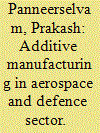

|
|
|
|
|
| Summary/Abstract |
Additive manufacturing (AM), also popularly known as 3-D printing, is revolutionising the global manufacturing landscape. The proliferation of AM technology has had a huge impact on the design and production capability of the manufacturing industry. At the same time, the technology to mimic and print real parts has huge implications for a country’s defence capability and security. In order to understand the growing importance of manufacturing technology in the digital age, the article focuses on the fundamental aspects of AM technology and how it is changing the aerospace and defence sector.
|
|
|
|
|
|
|
|
|
|
|
|
|
|
|
|
| 2 |
ID:
111751
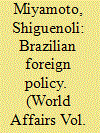

|
|
|
| 3 |
ID:
122100


|
|
|
| 4 |
ID:
170536
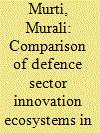

|
|
|
| 5 |
ID:
116324
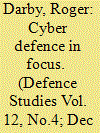

|
|
|
|
|
| Publication |
2012.
|
| Summary/Abstract |
The management of information and knowledge in the defence sector stands at an interesting juncture. Key dilemmas facing the defence sector are on one hand, identifying and effectively using the increasing potential of technical interoperability; on the other hand, the need for new management practices juxtaposed with the escalating global challenge to security to counteract the rise of cyber crime, cyber espionage and in the extreme, cyber warfare. As a consequence, governments are increasingly identifying their digital infrastructure as a strategic national asset that also needs to be better protected. This paper argues that such threats to the defence sector from cyberspace challenge existing paradigms for managing information and knowledge and suggests a more radical approach to gaining knowledge superiority is prescient to remain agile in the fast-moving, technologically advanced defence cyberspace. This paper posits the view that if the defence sector acknowledges information and knowledge as a strategic asset it needs to be more aware of the advantages of knowledge management (KM) and place it at the centre of the strategic management approach. This research also highlights the importance of the production and application of knowledge to manage the developing potential threats to the battle space, the business space and now cyberspace.
|
|
|
|
|
|
|
|
|
|
|
|
|
|
|
|
| 6 |
ID:
187199
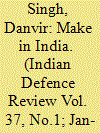

|
|
|
| 7 |
ID:
154382
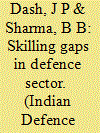

|
|
|
|
|
| Summary/Abstract |
India has the potential to emerge as a gobal platform for defence research, maufacturing and supply chain sourcing. With ambitious acquisition plans for modernisation, India has a historic opportunity, as the Modi Government has launched the Make in India initiative. The defence sector is one of the 25 sector which can propel manufacturing to new heights. May proactive steps such as change in DPP, Licensing norms, FDI limit have been taken. However, this sector to take off needs adequate and quality talent. India needs about 200, 000 skilled people in the defence and aerospace industry in ten years. For the Aerospace and Defence Industry, which works at the cutting edge of technology, availability of technical talent is becoming an acute challenge. There are serious structural gaps in the demand and supply of talent in this sector.
|
|
|
|
|
|
|
|
|
|
|
|
|
|
|
|
| 8 |
ID:
177203
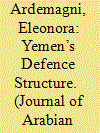

|
|
|
|
|
| Summary/Abstract |
Yemen’s defence structure presents a dynamic of “double hybridization”: hybridization due to the overlapping of tribal and military roles and loyalties, and hybridization because of the vague boundaries between formal and informal security actors. Since 2011 onwards, patronage has assumed a sub-state connotation, not a systemic one, occurring in a space of contested authority, beyond the state’s institutional perimeter: patronage develops outside the framework of the central state establishing direct connections between Yemeni local chiefs or warlords and Middle Eastern powers. This new dynamic highlights the deep crisis of the national level, revealing the fracturing of the state and of its formal institutions. Adopting critical security lenses and choosing the defence structure as unit of analysis, this article contends that the army used to rely, before 2011, on informal forces as coup-proofing strategy; since then, however, militias have turned now into the pillar of an emerging defence sector built on composite military alliances. While Yemen’s defence matrixes have changed, their hybridity persists, as, with the collapse of central state institutions, multiple military players have emerged.
|
|
|
|
|
|
|
|
|
|
|
|
|
|
|
|